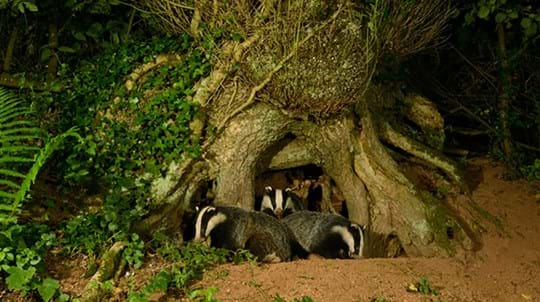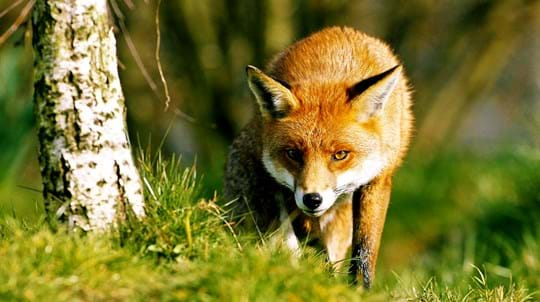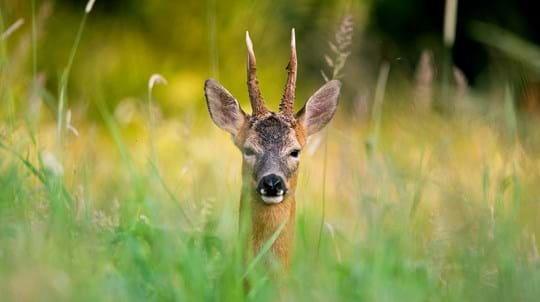Who's been there?
Learn how to track elusive woodland animals with our poos and clues swatch book
Buy it now
Digital Content Manager
Animals like hedgehogs, badgers and foxes are very secretive. We’re more likely to spot the clues they leave behind than the animals themselves, which is where their poo comes in.
Wild animal poo is a great way to identify the creatures that have been creeping around your garden or travelling through your local wood. Some droppings can be identified by sight alone, while others may need closer examination to find characteristic signs like bones or feathers.
Here is a quick guide to identifying some of the more common animal poo you might find.
Learn how to track elusive woodland animals with our poos and clues swatch book
Buy it nowSize: 8cm – 12cm.
What’s inside: fur, feathers, bones, seeds and berries.
Where to find it: prominent areas of territory, like the middle of a paving slab or on top of a grassy mound.
Fox poo has a distinctive musky smell and is a similar shape to dog poo, but with a pointy end. The colour can vary, with rural foxes leaving quite dark droppings and urban foxes (which feed on our rubbish) leaving lighter ones. The colour of fox poo can also change with the season. In winter, when foxes are mostly hunting small mammals, it can be grey or black, while in summer and autumn, when there are lots of berries to snack on, droppings can be purplish.
Size: 1.5cm – 5cm.
What’s inside: shiny insect remains.
Where to find it: wherever the urge takes them in their foraging grounds - usually lawns and playing fields.
Hedgehog poo is long, cylindrical, and dark brown, grey or black. The best way to identify it is to look for shiny bits in the droppings, which are the remains of beetles and other insects that the hedgehogs in our woods like to eat. Hedgehog poo is said to have an unpleasant odour mixed with a hint of linseed oil.
Size: about 10cm long.
What’s inside: seeds and berries.
Where to find it: shallow pits or latrines on the edge of badger territory.
Like us, badgers prefer to use a toilet. Theirs is known as a latrine: a small pit dug into the ground, usually around 10cm – 15cm deep.
Badger poo is normally sloppy and wet, but the texture can change depending on what they eat, with other droppings appearing firmer and sausage shaped. Badgers have a diverse diet including seeds, berries, worms and carrion which can colour their droppings purple, black or brown. The smell can differ too, with some people reporting foul, oily-smelling droppings and others describing the scent as sweetly musky.
Size: 1cm or less.
What’s inside: plants and grasses.
Where to find it: grassland, field edges and hedgerows.
Rabbit droppings are some of the easiest wild animal poo to recognise. They’re pea-sized and round, brown-green in colour and deposited in a dense collection of pellets. They’re made up of plants and grasses that give rabbit poo a sweet smell with a hint of mown hay.
Size: 1cm – 1.4cm.
What’s inside: nothing identifiable.
Where to find it: along paths, or in fields and woodlands.
An animal’s diet is a helpful clue when identifying animal poo, but roe deer are different. They regurgitate and chew their food twice before digesting it, which means there aren’t any obvious signs of food in their droppings. Deer droppings also lack a distinctive smell, leaving you to identify them using sight alone.
All deer droppings look fairly similar - quite small, smooth, oval shaped pellets. Roe deer poo is near-black and glossy when fresh, the cylindrical pellets often pointed at one end and round at the other. Red deer poo is larger and more acorn-shaped, and while initially black and shiny, becomes duller and dark brown with age.
Like with any kind of animal identification though, life doesn't always mimic the ID guides, and the standard size and colour characteristics associated with each deer species can vary based on the condition and diet of each animal.
Size: 3cm – 10cm.
What’s inside: bones, fish scales and shellfish remains.
Where to find it: prominent places close to water, like on rocks or grass mounds.
Otter poo is also known as ‘spraint’ and is grimly distinctive. It’s usually a greenish, black or grey colour, slimy, and packed with things like fish scales, bones and crayfish parts. The way otter poo smells is cause for debate – some people say it’s musky and overwhelmingly fishy, while others swear that it smells like jasmine tea.
Learn how to track elusive woodland animals with our poos and clues swatch book
Buy it nowIdentifying animal poo, tracks and signs is much easier when you know what you’re looking for. Luckily, there’s a swatch book for that!
Our Poos and Clues swatch book is a more in-depth guide to animal poos and clues, including even more species, from otters to owls. Pop it in your pocket and see what you can find on your next woodland walk.
Animal droppings can contain harmful bacteria. Always use a stick or wear disposable gloves to take a closer look or break it apart.

Blog
Danielle Wesley • 17 Feb 2020

Blog
Charlotte Varela • 16 Aug 2019

Trees woods and wildlife
Explore our species guides to the wildlife that depends on woods and trees, from plants and fungi to mammals, birds, bees and beetles.